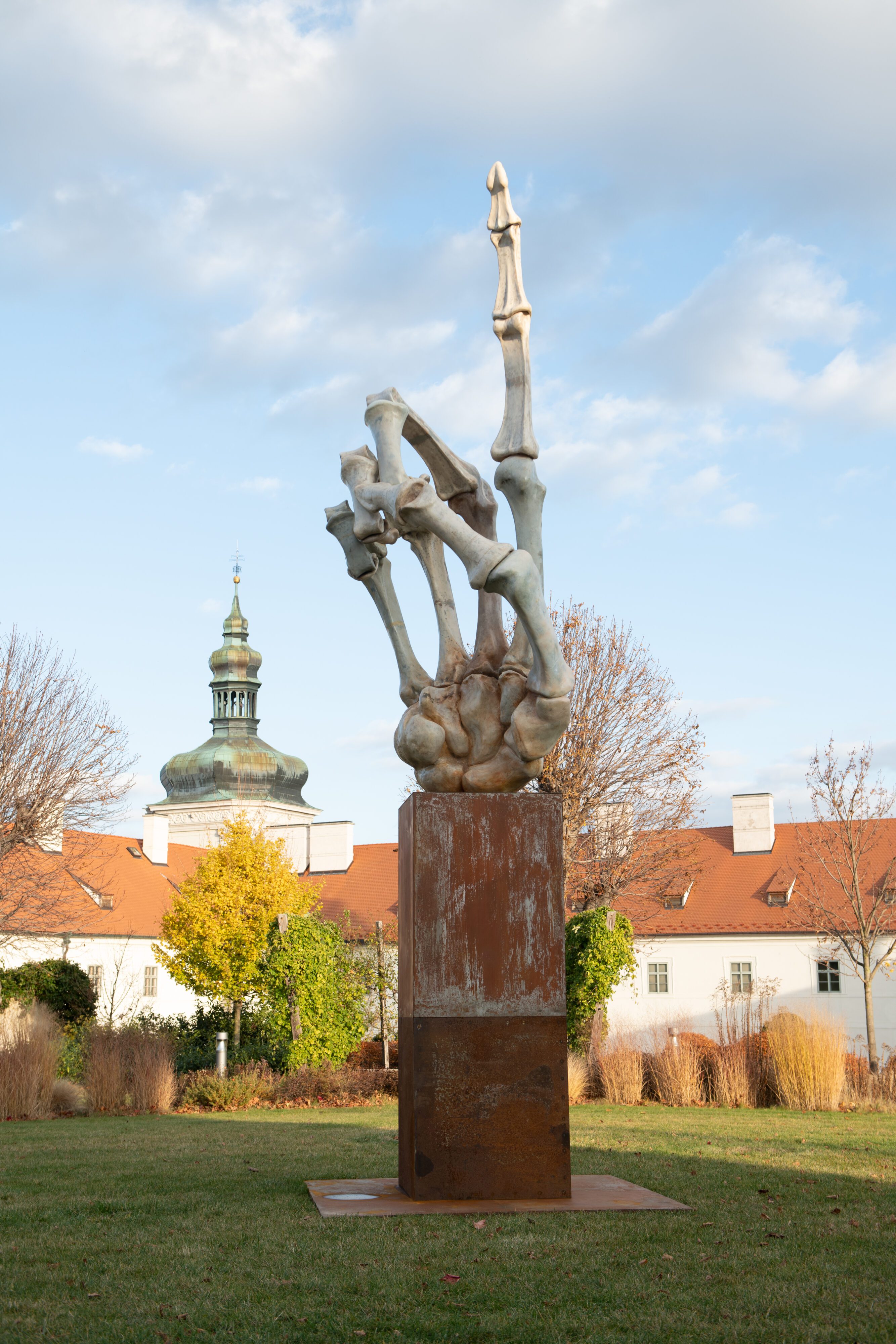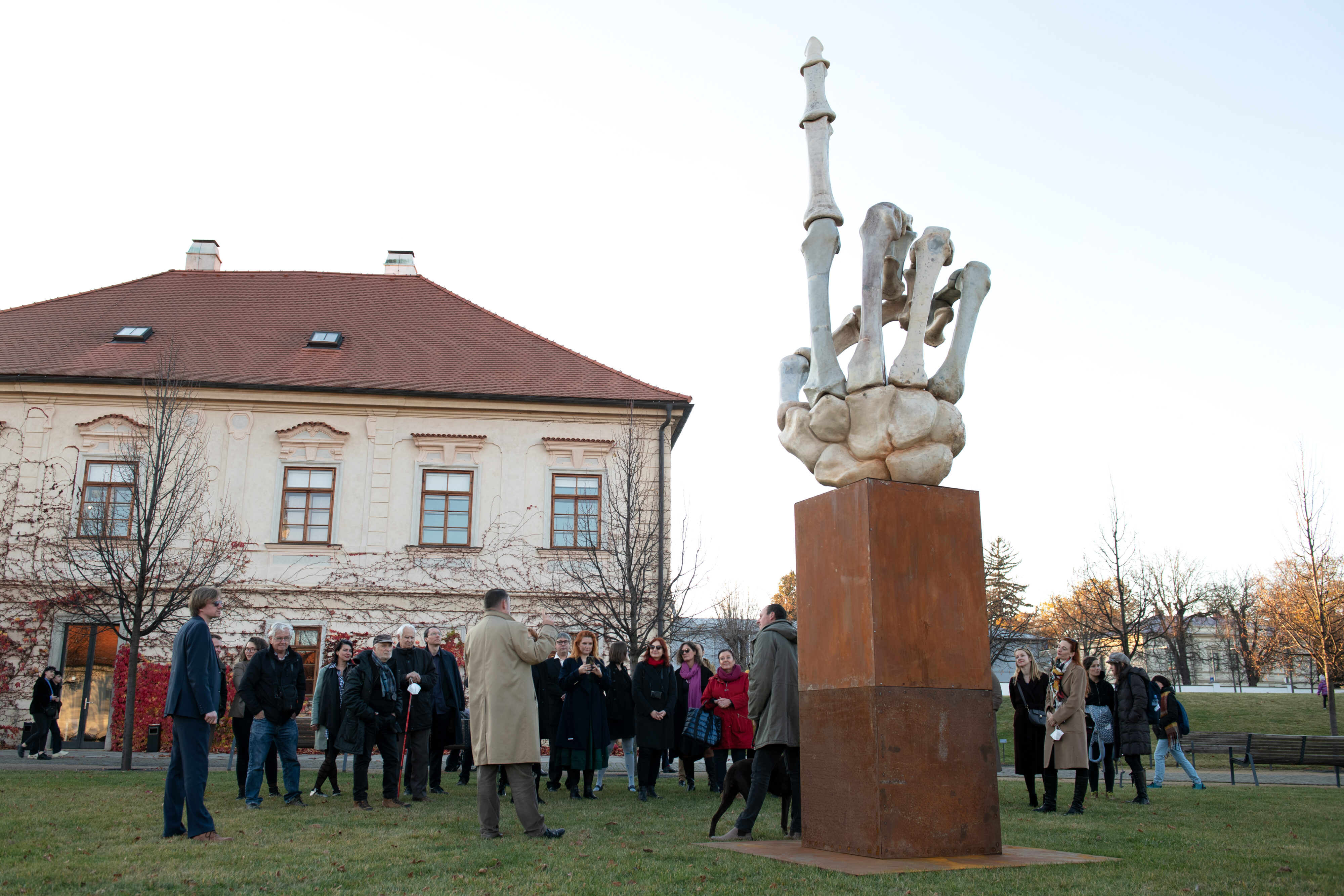2020
polyester resin, iron, 550 × 200 × 200 cm
Kryštof Hošek (born 1984 in Prague) studied at the Prague Academy of Fine Arts in the figural sculpture studio of Prof. Jan Hendrych and Peter Oriešek. He focuses on traditional sculptural disciplines such as the portrait, bust and commemorative plaque. In recent years he has also made a name for himself on the Czech art scene with his monumental work through which he critically reflects on contemporary society, often in the form of ‘urban interventions’ through a direct dialogue with his works’ immediate surroundings.
Kryštof Hošek’s sculptural expression stems from his mature awareness of the broader context of cultural history. In his freely conceived works, he employs the language of ‘precision’ realism – not in order to superficially describe reality but, on the contrary, to fathom the (not always apparent) essence of reality and show its true face. Fundamental for Hošek is the principle of the human body as the focal point of spiritual being. The Renaissance notion of humanist objectivity is, in Hošek’s sculptures, polemically juxtaposed with expressive plasticity recalling hallucinatory visions or mordantly satirical grotesques.
The sculpture There Is More was created as part of the Language of Gestures series in which a skeletal hand is brought to life and conveys an unambiguous, though in some cases also superficial and clichéd viewpoint (for instance the Facebook-style Like I and II with their thumbs-up agreement and Victory with its V-sign symbolising the values of Václav Havel’s democracy embodied by his statement ‘Truth and love must prevail over lies and hatred’). The fact that the hand is skeletal creates a sharp (and undoubtedly ironic) contrast between emotional states in the human individual and the sober realisation that we are mere shadows cast on the ‘eternal canvas’ of the history of civilisation. The gesture of the hand that we see in There Is More is connected with the internationally renowned painting Saint John the Baptist (c. 1513–1516) by Leonardo da Vinci in the collection of the Louvre in Paris. In the painting, John the Baptist points heavenward, visually symbolising the first verse of the Gospel according to John:
There was a man sent from God, whose name was John. He came for testimony, to bear witness to the light, that all might believe through him. He was not the light, but came to bear witness to the light.
It’s impossible not to sense a deeply rooted relationship between There Is More and its new
temporary ‘home’. In this sculpture, we can find a transcending resonance with the spiritual
memory of the Gothic Church of St Barbara and the Baroque Jesuit College. The age-old notion of memento mori, or ‘Remember you must die’, inseparably linked with the iconography and ethos of Kutná Hora and its famous Ossuary, is also woven into its meaning. A connection, one that was unplanned but is no less inspiring for that, can be found with the nearby sculpture What We Know by Jiří Středa, a work showing the figure of a man who, with his raised finger and upwards gaze, turns our focus to the heavens. Ultimately, There Is More demonstrates that the encounter between contemporary art and a historical setting
doesn’t have to be antagonistic but can be a conversation based on a partnership that is
mutually beneficial.
Richard Drury
http://www.krystofhosek.com/cs/

